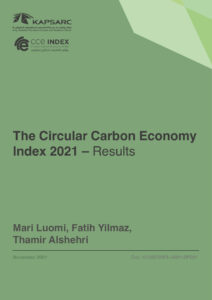Thamir is a Research Lead in the Climate & Sustainability program. He is currently focused on creating data-driven tools to identify and evaluate different energy market scenarios and developing the KAPSARC Circular Carbon Economy Index.
Thamir also acts as an advisor to the broader energy ecosystem in Saudi Arabia, particularly in the areas of clean energy transitions, sustainability, and carbon emissions management. He is also a member of the Technology and Economic Assessment Panel, United Nations Environment Programme (UNEP).
He previously worked as a lecturer in Australia and has entrepreneurial and industrial experience working on award-winning projects such as the Burj Khalifah Building Management System.




















